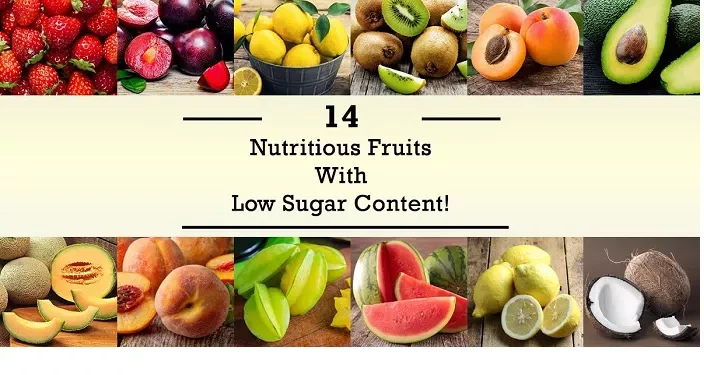For individuals with diabetes or those who are concerned about their blood sugar levels, choosing the right fruits can be a crucial part of maintaining a healthy diet. Fruits are generally known for their rich nutritional profiles, containing essential vitamins, minerals, fiber, and antioxidants. However, not all fruits have the same impact on blood sugar. Understanding which fruits are more suitable and how to incorporate them into a diabetic diet is essential for glycemic control and overall well-being.
Low Glycemic Index Fruits
Low glycemic index (GI) fruits are often considered favorable for sugar patients. These fruits have a relatively slow and steady effect on blood sugar levels. For example, apples are a popular choice. They are rich in fiber, particularly pectin, which helps to slow down the digestion and absorption of carbohydrates. This means that the sugar from the apple is released into the bloodstream more gradually, preventing a rapid spike in blood glucose. A medium-sized apple contains around 25 grams of carbohydrates, but due to its fiber content, the impact on blood sugar is moderated. Berries such as strawberries, blueberries, and raspberries are also excellent options. They are not only low in GI but also high in antioxidants. These antioxidants have been associated with various health benefits, including reducing inflammation and protecting against oxidative stress, which is often elevated in diabetes. A cup of strawberries, for instance, has about 12 grams of carbohydrates and provides a good amount of vitamin C and other phytochemicals.
Another low GI fruit is grapefruit. It has a unique combination of compounds that may have beneficial effects on insulin sensitivity. Studies have suggested that consuming grapefruit regularly may help to lower fasting blood sugar levels. Half a grapefruit contains approximately 10 grams of carbohydrates and is a good source of vitamin A and potassium. Kiwi is also a fruit that can be beneficial. It is rich in vitamin C, vitamin K, and fiber. The fiber in kiwi helps to regulate digestion and can contribute to better blood sugar management. A single kiwi has around 15 grams of carbohydrates and offers a host of other nutrients that support overall health.
Fruits with High Fiber Content
Fiber is a key component in the diet of sugar patients. It helps to increase satiety, prevent overeating, and slows down the absorption of sugars. Pears are a good example of a fruit with high fiber. They contain both soluble and insoluble fiber. Soluble fiber forms a gel-like substance in the digestive tract, which further delays the absorption of carbohydrates. A medium-sized pear has about 27 grams of carbohydrates and a significant amount of fiber that can assist in maintaining stable blood sugar levels. Avocados, although technically a fruit, are very low in carbohydrates and high in healthy fats and fiber. The monounsaturated fats in avocados can have a positive impact on heart health, which is often a concern for individuals with diabetes due to the increased risk of cardiovascular disease. Avocados can be added to salads or used as a spread, providing a creamy texture and valuable nutrients without causing a significant rise in blood sugar.
Oranges are another fruit that offers a decent amount of fiber along with a good dose of vitamin C. The fiber in oranges helps to slow down the digestion of the natural sugars present. However, it is important to note that orange juice may have a different effect as the fiber is often removed during the juicing process, leading to a more rapid increase in blood sugar compared to eating the whole fruit. A medium-sized orange contains around 15 grams of carbohydrates and is a refreshing and healthy choice when consumed in its natural form.
Moderation and Portion Control
Even with the selection of suitable fruits, portion control is of utmost importance for sugar patients. While fruits are healthy, they still contain carbohydrates, and consuming excessive amounts can lead to elevated blood sugar levels. For example, bananas are a common fruit but are relatively higher in carbohydrates compared to some of the other low GI fruits. A large banana can have around 30 grams of carbohydrates. However, if consumed in moderation, say half a banana at a time, it can still be part of a balanced diabetic diet. Similarly, mangoes are delicious and rich in vitamins and minerals, but they have a higher sugar content. A small mango (about 100 grams) contains around 20 grams of carbohydrates. By being mindful of portion sizes and incorporating fruits into a meal plan that also includes a balance of proteins, healthy fats, and complex carbohydrates, sugar patients can enjoy the benefits of fruits without compromising their blood sugar control.
Conclusion
In conclusion, there is no one “best” fruit for sugar patients. Instead, a variety of fruits can be incorporated into a diabetic diet as long as certain principles are followed. Low glycemic index fruits and those with high fiber content are generally more favorable as they have a less pronounced impact on blood sugar levels. Examples such as apples, berries, grapefruit, kiwi, pears, avocados, and oranges can be excellent choices. However, portion control is crucial regardless of the type of fruit. By carefully monitoring the amount of fruit consumed and considering its carbohydrate content, individuals with diabetes can enjoy the nutritional benefits of fruits while maintaining stable blood sugar levels. Additionally, it is always advisable for sugar patients to consult with a healthcare provider or a registered dietitian who can provide personalized dietary advice based on their specific health conditions, medications, and individual needs. A well-planned diet that includes the right fruits in appropriate portions can contribute to better glycemic control and overall health and well-being for those dealing with diabetes or blood sugar concerns.
Retated topics



























